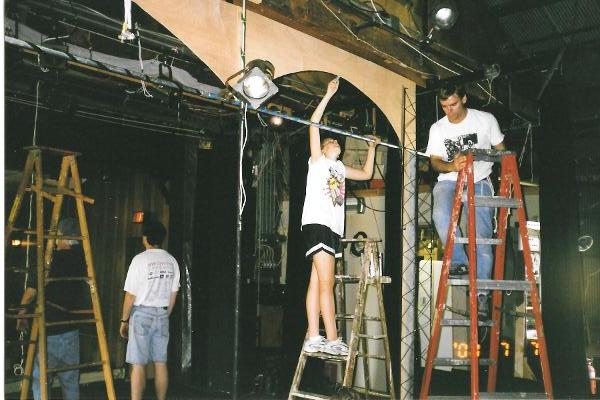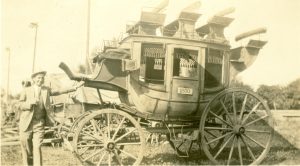

The week prior to Stage Coach Players’ 2019 production of Little Shop of Horrors, theatre archivist Kathy Cain found herself going through photos of past produced plays. She was in search of photos from the theatre’s 1999 production to post in the lobby for both Stage Coach’s audience along with cast and crew. It is a task she has performed for more than 30 years.
Looking through archive photos taken since Stage Coach Players’ first produced show in 1947, Arsenic & Old Lace, a standard for most community theatres could lead many theatre geeks down the yellow brick road of nostalgia. And why not. The DeKalb area theatre will shortly begin its 75th consecutive year of offering live theatre to its community family.
The journey has helped make a long and wonderful life for many of those who have performed onstage as well as worked backstage for Stage Coach. The theatre has survived three permanent locations and utilized various spaces where plays and musicals and other artistic endeavors have thrilled and pleased audiences for more than 375 productions over the years. The most recent a black box production of the award-winning Visiting Mr. Green this past February.
The group has performed in a barn, school auditoriums, the Egyptian Theater, restaurants, and on one occasion for The Trial of Mary Dugan, at the DeKalb County Courthouse. Currently Stage Coach Theatre resides in its second permanent home. A brick building in downtown DeKalb which was purchased in November of 2000 from the Moose Lodge. This is where we’ll start our story.
After purchasing the new building, the Stage Coach board of directors set its goal of opening the new building to its patrons the following summer. The building, however, was not constructed with live theatre in mind. “When we took possession,” Bob Cain, longtime Stage Coach member and former organization president recalls, “The upper level was basically one huge room. It had been used as a church and there were many pews in the room.”
So Stage Coach Players members went to work on designs for their new theatre. Cain designed the stage block and auditorium while Mark Hunyard designed the lighting structure and oversaw its wiring of the circuits. For several reasons, the stage block needed to be built up several inches from the original floor. That took many hours and a lot of organized help. But the excitement of creating a new play space would make the time worth it in the end.
At the same time, part of the floor needed to be raked for theatre seating. Raked, a term which essentially means the seating is sloped so that seating in the back is higher than those nearer the stage, allow improved view of the stage and better sound. At the time the group purchased the building, it also came without seating. So they needed to find auditorium seats to fill that space. “(Stage Coach member) John McCue arranged for us to get the seats from a closed movie theater in Bloomington, Illinois,” Cain recalls. All we had to do was to go down, take out the seats and bring them up to our theater.”
According to Bernie Schuneman, board member at the time, theatre members worked through the winter and spring cleaning and building to transform the space into the current stage block and auditorium we see today when we go to a Stage Coach production. The stage block has since been expanded several feet in each direction, but the main section remains intact.
There were additional updates needed to bring the building up to code, to create a theatre lobby and box office and to give the new theatre a pleasing aesthetic. The new theatre needed to be open in time to perform their first play at the new Stage Coach Theatre, Gypsy. The group did all of this while still producing live theatre in their old building.
So, the scene was set, for Stage Coach Players to unveil its new theatre on August 9, 2001, and begin a new chapter in the lives of those who consider Stage Coach home.



